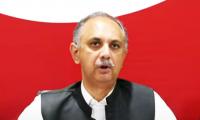ISLAMABAD: Pakistan’s balance of payment (BoP) position has been worsening in the wake of rising import pressures and external debt repayments, including mark-up and principal amount.
The country’s total external debt repayments including mark-up and principal amount is projected to stand at $40 billion over a three-year period. Alone in the coming October’s first week, Islamabad will have to repay a principal amount of $1 billion on account of maturity of Islamic denominated Sukuk Bond that was launched back in 2016 for shoring up foreign exchange reserves.
The overall external debt repayment and obligation is estimated to consume $14.7 billion during the current fiscal year. The government will have to repay external debt and obligations to the tune of $830 million to Paris Club, $4.7 billion to Non-Paris Club, $2.6 billion to multilateral creditors, $4.448 billion to commercial creditors, $1 billion on bond repayment and $1.068 billion to the IMF.
The increased imports of food commodities including wheat, sugar and cotton consumed $8.2 billion in the last fiscal year. The situation has arisen where the government will continue importing such food commodities in the current fiscal year.
The POL prices have been escalating in the international market and Arab Brent touched $76 per barrel. The import of mobile phone is another major ticket item on import bill. Out of total import bill, 17.8 percent imports went into consumer goods but in FY 2021, 22.8 percent imports were consumer goods. The growth in imports of consumer goods in FY2021 is driven by food and mobile phones. The imports surged to $6.2 billion in June 2021, so the current account surplus had turned into deficit and overall fiscal year ended with deficit.
“The ECC managed decision making failed to take timely decisions related to pricing of cotton and wheat because of which the country had to bear heavy amounts for importing food items," said official sources. It could only be solved through improved coordination among different stakeholders.
“Pakistan’s economic managers will have to walk on a tight rope to stick to the IMF program as there are strong indications that the government would make last ditch efforts to convince the IMF for showing lenient attitude keeping in view Delta wave of coronavirus hitting Pakistan,” top official sources confirmed while talking to The News here on Friday.
When contacted, former finance minister Dr Hafiz A Pasha said that Pakistan’s external debt and obligations related repayment would be estimated at around $40 billion over the next three years period, posing a serious challenge for the country’s economy. He said that the current account deficit was showing a rising trend and it could go up to $10 to $12 billion for the current fiscal year.
The remittances, he said, were showing a higher trajectory and providing breathing space to the economy on external accounts. The sources conceded that Pakistan’s fiscal woes were now turning into arising challenges on BoP position. The SPI has been rising on a weekly basis for the last several months and rising food and fuel prices are going to exert pressure on the inflationary side.
One of the major reasons was the depreciating exchange rate as the rupee went down from Rs152 against a dollar to Rs162.5 against dollar in the last couple of months, so it is keeping pressure on rising price hike.
Now the government is implementing a strategy to build up foreign exchange reserves as recently the government secured over $300 million from a UAE based commercial bank. Pakistan’s total foreign exchange reserves stood at $24.875 billion on July 23, 2021. According to break-up shared by the State Bank of Pakistan (SBP) in its statement issued on last Thursday, the foreign exchange reserves held by SBP stood at $17.8 billion and foreign currency held by commercial banks were standing at $7.04 billion. During the week ended 23-July 2021, SBP reserves decreased by $221 million to US$17.829 billion.
Judge raised the query after warning to announce the verdict if Maneka’s lawyer remained absent from the hearing and...
The development came amid the United States’ explicit opposition to the bilateral project
Qaiser claimed that both parties rejected entire process which led to the formation of the incumbent government
She examined a proposed site for the construction of a state-of-the-art hospital in Murree and approved
Raoof Hasan warned against any attempt to extend the tenure of Chief Justice of Pakistan Qazi Faez Isa by another...
These payments will help PBA members to clear some of their liabilities







